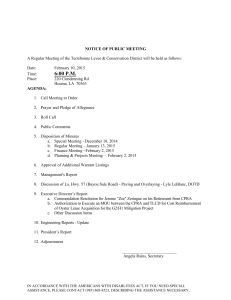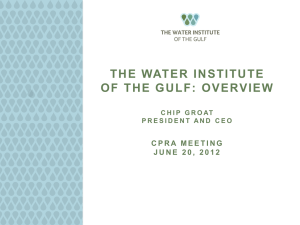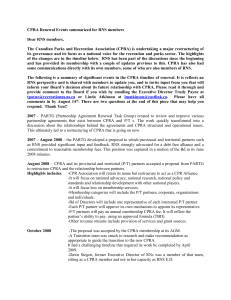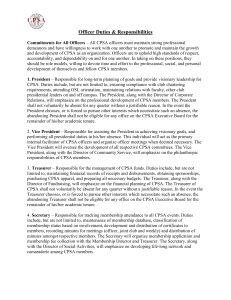File french ap syllabus minthorn 14-15
advertisement
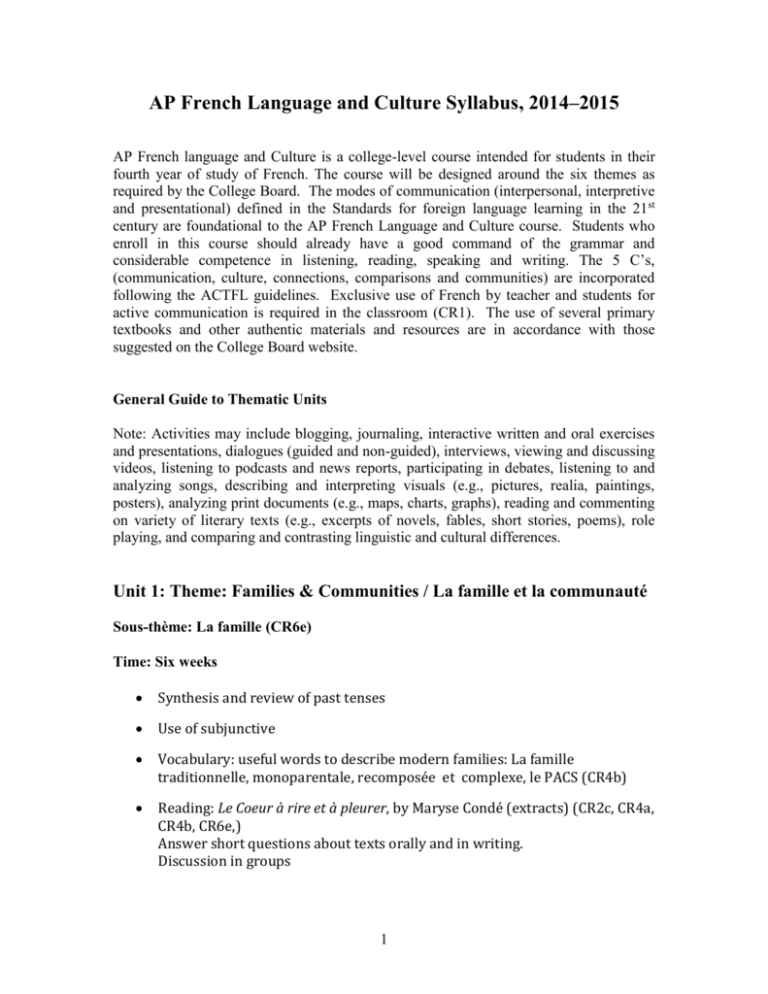
AP French Language and Culture Syllabus, 2014–2015 AP French language and Culture is a college-level course intended for students in their fourth year of study of French. The course will be designed around the six themes as required by the College Board. The modes of communication (interpersonal, interpretive and presentational) defined in the Standards for foreign language learning in the 21st century are foundational to the AP French Language and Culture course. Students who enroll in this course should already have a good command of the grammar and considerable competence in listening, reading, speaking and writing. The 5 C’s, (communication, culture, connections, comparisons and communities) are incorporated following the ACTFL guidelines. Exclusive use of French by teacher and students for active communication is required in the classroom (CR1). The use of several primary textbooks and other authentic materials and resources are in accordance with those suggested on the College Board website. General Guide to Thematic Units Note: Activities may include blogging, journaling, interactive written and oral exercises and presentations, dialogues (guided and non-guided), interviews, viewing and discussing videos, listening to podcasts and news reports, participating in debates, listening to and analyzing songs, describing and interpreting visuals (e.g., pictures, realia, paintings, posters), analyzing print documents (e.g., maps, charts, graphs), reading and commenting on variety of literary texts (e.g., excerpts of novels, fables, short stories, poems), role playing, and comparing and contrasting linguistic and cultural differences. Unit 1: Theme: Families & Communities / La famille et la communauté Sous-thème: La famille (CR6e) Time: Six weeks Synthesis and review of past tenses Use of subjunctive Vocabulary: useful words to describe modern families: La famille traditionnelle, monoparentale, recomposée et complexe, le PACS (CR4b) Reading: Le Coeur à rire et à pleurer, by Maryse Condé (extracts) (CR2c, CR4a, CR4b, CR6e,) Answer short questions about texts orally and in writing. Discussion in groups 1 Listening activity: Vidéo micro-trottoir: Pour vous c’est quoi la famille ? (CR2a) Le mariage? Les changements dela vie moderne? http://www.youtube.com/watch?v=kntJkeIclrE Activity in groups: Create your own video micro-trottoir. (CR5a) Participants express their opinions about modern families (positive and negative) Students write a paragraph to define what family is for them. (CR5b) Composition: Using the resources below as support, compare and contrast the concept of family in France and in your country/culture. (CR4a, CR4b, CR5b) Song : “L’Etait une fois des gens heureux,” by Céline Dion and all her brothers and sisters) http://www.youtube.com/watch?v=DZrr9EWxPSw&feature=related Chart INSEE: Ménages selon la structure familiale http://www.insee.fr/fr/themes/tableau.asp?reg_id=0&ref_id=AMFd2 Various articles about family from the magazine Sciences Humaines www.scienceshumaines.com Unit 2: Thème: Global Challenges—Les défis mondiaux Sous-thème: War and Peace (CR6a) Time: Six weeks Study the vocabulary associated with times of peace and war. Students will work in groups and discuss the natural rights of man, societies and their challenges and reasons for war, riots, terrorism and revolutions. (CR3a) Primary source: Excerpt from Discours sur l’inégalité parmi l’homme, by JeanJacques Rousseau. (CR2c, CR4b, CR5a) Students will read text and present main ideas. They will compare Rousseau’s ideas with their own reasons for “inequalities” of man that may lead to conflicts. Students will work in groups and present their ideas on an ideal society in relationship to man’s nature. (CR3a) Secondary source: Students will listen to audio of Jacques Brel singing “Barbara,” by Jacques Prévert (CR2a, CR4a) Students will read the poem and discuss the effects of war on a society. (CR2, CR3a, CR4b,) Terciary source: Students will listen to the poem “Le Déserteur,” by Boris Vian, sung by Yves Montand (CR4a) 2 Students will work in groups and discuss reasons given in poem for opposing the draft or war. Students will then prepare a debate on the pros and cons of war. (CR3a) Students will read the poem “Le Déserteur.” (CR2c) Working in groups, they will present the portrait of the narrator. Students will imagine his character and profile. What are the profiles of a soldier? of an anti-war civilian? (CR3a, CR5a) Students will choose a classmate and exchange letters in the following roles: a soldier at war and a loved one back home. (CR3b) Quartenary Source: Audio (53 seconds) on “La Mort de Gavroche,” from Les Misérables, by Victor Hugo, from Radio France Internationale. (CR2a) Students will listen to audio and answer questions on comprehension. (CR4a) Students will research newspaper or magazine articles on child soldiers of today (e.g., Le Monde, Le Figaro, and France-Soir) and share their articles with the class. (CR2b, CR4b, CR5a) Students will write a formal essay in which they choose a pro-war stance or one which opposes all wars. They must support their opinions by citing from Rousseau’s text, the two poems and the audio. (CR5b) Websites: “Le déserteur”: http://www.youtube.com/watch?v=gjndTXyk3mw song http://www.poetica.fr/poeme-426/boris-vian-le-deserteur/ poeme “Barbara”: Sung by Yves Montand http://www.youtube.com/watch?v=F_9xwd3OxWg Lyrics: http://boppin.com/poets/prevert.htm Radio France Internationale: Audio: “La Mort de Gavroche,” du roman Les Misérables. (53 secondes) http://www.rfi.fr/lffr/questionnaires/075/questionnaire_72.asp Review of past tenses, conditional, and the subjunctive Unit 3: Thème: Personal and Public Identities / La quête de soi Sous–theme: L’identité linguistique (CR6d) Time: Six weeks Primary Source: Text on the dialects and languages traditionally spoken in France (e.g., breton, l’occitan, provençal, corse) [histoiresdefamille.voila.net/langues_regionales.htm] 3 Go over difficult vocabulary. Read the text (CR2c, CR4b, CR 6d, CR8) as a group Answer questions based on the text. (CR4b) Complete exercise in which the student must place the dialect/language in the appropriate region of France on the map provided by the teacher. Secondary Source: Tape of various French accents After listening to a tape (and an accompanying text) of various French accents, students will make note of at least one phonetic difference between standard French and the French of two or three different regions of France which reflect the influence of the local dialect. (CR2a, CR6, CR8) Working in pairs, contrast various differences in accents from two of three regions of the United States or of England. (CR3a, CR8) Terciary Source: “La Découverte ou l’ignorance,” sung by TriYann, based on a text by Morvan Lebesque & comments that follow [Youtube.com] Go over difficult vocabulary. Listen to the song and answer questions based on the lyrics. (CR4a) Discuss content of the song as a group. (CR3a) After reading some of the comments (selected by the teacher) found at the end of song on YouTube, students write their own email response as to whether or not it is important to try to preserve one’s traditional language(s) and/or culture(s). (CR3b, CR6) Quartenary Souce: the film Bienvenue chez les Ch’tis View a brief excerpt of the movie. (CR4a, CR8) Discuss the difficult vocabulary. Answer questions about the movie excerpt (CR 3a, CR4a). Working with a partner, the students write three short paragraphs in which they describe three aspects of daily life in the north east of France which contrast with those of daily life in Paris. (CR3a). Then, present list to class. (CR5a, CR5b) 4 Unit 4: Thème: Beauty and Aesthetics—L’Esthétique Sous-thème: La beauté (CR6f) Time: Six weeks Primary Source: Beauty as seen through the Renaissance period in Europe. A look at Diane de Poitiers and her beauty routine and some of the customs practiced in that era. (CR2, CR4a) http://www.dailymotion.com/video/xeimtt_diane-de-poitiers-1-5_news http://www.dailymotion.com/video/xein46_diane-de-poitiers-2-5_travel Students will study vocabulary associated with beauty, beauty routines, practices, etc. (CR3a) Students will discuss their personal concepts of the beauty criteria of the Renaissance period and create a list of words used to describe beauty then, including hygiene, make-up and hairstyles (e.g. magie, potions, soluble, and mortière). (CR3a) Students will watch the first two episodes on Diane de Poitiers and take notes.(CR2, CR4a) Students will be asked questions on Diane de Poitiers beauty regime and the standards of beauty of the time (CR4a) Students will listen to the following podcast from Radio France Internationale on the new criteria of beauty and take notes. (CR2, CR4a) http://www.rfi.fr/emission/20110815-1-nouveaux-canons-beaute-rediffusion Students will read the article in Marie-Claire magazine of March 2008 on the book Je suis pas une bombe, et alors? by journalist Caroline Rochet. (CR2b, CR4b) Students will work in groups to prepare an oral summary of the criteria used today to define beauty and the effects of this on the average woman. (CR3a, CR5a) Students will keep a dialogue journal containing comments, ideas, questions, and personal practices or preferences on articles being read on beauty. (CR3b) Students will work in groups and research beauty practices in France or another francophone country to compare with beauty practices in the United States. Research should include perspectives on clothing, make-up, and ideals. The presentation may be presented as a video, a power point, or brochure or be presented orally in the form of a report. (CR5a or CR5b, CR7) Review of the imperfect tense and passé composé, reflexives and the imperative. 5 Unit 5: Science and Technology / La Science et la techonologie Sous-thème: La physique (CR6b) Time: Six weeks Review of passé compose, future and future antérieur, conditionnel) Review of adjectives Introduction of new scientific words such as these: particules, circonférence, bobine, protons, avouer, insaisissable, etc. Primary Source: Video on the inauguration of Higgs boson, the début of the new accelerator at Cern, Switzerland. (CR2) Students will listen to video (without picture) and take notes. (CR4a) Students will listen again and watch video to verify their notes. (CR4a) Students will work in groups and discuss the purpose of the construction of the Hadron collider and what it might hope to accomplish. (CR3a) Students will work in groups and create an outline for the video. They will share this with the class and discuss. (CR3a, CR4A, CR5a) Secondary Source: Reading—article from Le Figaro, “Les premières traces du boson de Higgs.” (July 2011). (CR2b) Students will read the text and discuss in small groups. (CR3a) Students will debate the positive and negative consequences of this discovery and possible implications for the future. (CR3a) Formal essay: Students will write an essay using the vocabulary and concepts from the video and the newspaper article to write about the implications of this discovery for the future. (CR5b) Websites: Video: http://www.youtube.com/watch?v=Jn6LJd8zMNQ Newspaper article: http://www.lefigaro.fr/sciences/2011/07/25/0100820110725ARTFIG00519-les-premieres-traces-du-boson-de-higgs.php Other possible sources: http://electra2zeiss.tonempire.net/t5703-boson-de-higgs-ou-nouvelle-force-de-lanature http://www.swissinfo.ch/fre/sciences_technologies/Le_CERN_et_la_physique_de s_particules_pour_les_nuls.html?cid=30775702 6 Unit 6: Contemporary Life / La vie contemporaine Sous-thèmes: La publicité et le marketing (CR6c) et l’identité linguistique (CR6d) Time: Six weeks Students will review the vocabulary associated with fruits, assorted flavors and dairy products (CR3a) Primary Source: Dannon yogurt products in France and four other francophone countries: Switzerland, Belgium, Quebec, and Morocco. http://www.danone.com/fr/groupe/presence-mondiale.html Students will log onto the following site and follow research projects questions that include a detailed list of the variety of yogurt products in each country, specific names and flavors offered for each product. Students will make linguistic comparisons between certain features such as a variety of ways to describe the word “flavor,” the different ways to say “yogurt,” and the presence or absence of “franglais” in such expressions as “six-pack,” and “packaging.” (CR2b, CR4b) Students will then work in groups and present their findings to the class. They may choose to work in groups presenting their findings on one country. (CR3a, CR5a) Secondary Sources: A television ad from France and from Quebec on Dannon yogurt available on Youtube. (CR2a) Québec—Danone Silhouette http://www.youtube.com/watch?v=jVtWDU95nZo France—Taillefine http://www.youtube.com/watch?v=3RU7EWPwGAE&feature=related http://www.youtube.com/watch?v=cmoOivl8HqY&feature=related Pour en voir plus de clips de Danone, cliquez sur ce site, choisissez votre marque et amusez-vous. http://www.danoneetvous.com/Vos-marques/Toutes-mes-marques http://www.youtube.com/watch?v=xnzcp1F5LW8&feature=related Students will listen to each video (without picture) and take notes. (CR4a) 7 Students will listen and watch video and revise notes. (CR4a) Students will do a cloze activity on each video and then work in groups and compare answers. (CR4a) Discussion on different accents between the French and Quebecois videos. Which one is easier to comprehend? Students will work in groups and do research on another product or food chain (e.g., Coca Cola and Kentucky Fried Chicken) that is commonly found in our country and francophone countries. They will present an audio-visual report to the class targeting similarities and differences in marketing approaches as well as linguistic variations. (CR5a, CR5b, CR7, CR8) Teaching Strategies In order to promote the highest level of achievement of the four skills (i.e., listening, speaking, reading, and writing), French will be spoken by the teacher and the students virtually all the time. In addition, the teacher will use a variety of teaching strategies and techniques, which include, but are not limited to, the following activities: Speaking In order to promote proficiency in speaking, the students will perform a variety of tasks which require them to speak with the teacher and with each other. Some examples include requiring the students to read assigned articles (of his/her choice), and then to present a brief lesson to the class, which will include a short vocabulary list and questions based on the text. This activity is designed to promote interaction among students and to remove the teacher from the center of instruction. Another activity partners students so that they can interact in simulated situations, interviews, or problem–solving tasks. When shown a series of sketches (such as those which have traditionally been a major section of the AP Language Exam) students will describe them, using idiomatic expressions and transitional words such as néanmoins, pourtant, and par conséquent (See René White’s En D’Autres Termes). Students go to the language lab where they do activities proposed by workbooks, which are designed to be used in the lab. Listening Comprehension In order to promote proficiency in listening, the teacher will provide a variety of activities that require students to focus on understanding authentic texts. Throughout the year, students listen to French songs and complete a cloze activity (à trous). The students also respond to multiple–choice questions after hearing relatively short passages, such as those found in Ladd’s workbook for AP language exam practice. The teacher may also provide selected podcasts, appropriate excerpts from 8 Youtube, and other Internet resources in order to provide students with opportunities to hear a variety of accents and of topics that are of interest to high school students and which correspond to the proposed College Board Thèmes. Reading Texts will be selected from a variety of authentic sources, such as magazines (print or digital), newspaper articles or articles taken from the Internet, and e-mails from native speakers of French, or from literary texts, such as poems, short stories, and excerpts from novels. Follow–up activities include multiple–choice questions, true/false statements, short-answer questions, or summative paragraphs based on the text. Interpretive activities include gleaning information from graphs and tables, and interpreting images that sometimes accompany the texts. Writing Because the continued study of grammar and vocabulary is very important in an advanced language class, students will do exercises based on the concepts and lexical items to be covered throughout the course of the year. The teacher will use a variety of textbooks and manuals whose purpose it is to enhance the students’ ability to express themselves, using structures and vocabulary to convey complex ideas. Frequent use of dictées and the writing of original sentences based on these dictées enhances the students’ acquisition of vocabulary and ability to understand spoken French. In addition to such discrete–point exercises, students will write short texts in which they are required to demonstrate mastery of certain structures and/or vocabulary, as specified by the teacher. Students also practice paraphrasing passages in written form that requires them to focus on main ideas of a text and to manipulate structures in recombined sentences. Students also write at least two formal papers (3 to 4 pages) on topics selected from a list provided by the teacher. AP Course Materials: Bravo, Heine & Heinle Thomson Learning, 4th Edition, 2002. Trésors du Temps, Glencoe, 1997. AP French: Preparing for the Language Examination, Addison Wesley Longman, 1997. Allons au-delà! La langue et les cultures du monde francophone, Richard Ladd, 2012. Additional books: Panaché Littéraire, Heinle and Heinle Publishers, 2005. Explorations, Heinle and Heinle Publishers, 1996. 9 En Bonne Forme, Houghton Mifflin Company, 2001. En d’Autres Termes, Wayside Publishing, 1995 Additional literary texts, as well as a variety of poems by various francophone poets will be included as needed to reinforce individual thematic Units. The following novels may be used either as excerpts or in their entirety: Le Petit Prince, Antoine de St-Exupéry La Jeune Morte, George Simenon Monsieur Ibrahim, Éric-Emmanuel Schmitt L’Étranger, Albert Camus Certain films that accompany novels or excerpts read may be shown in part or in their entirety. 10
